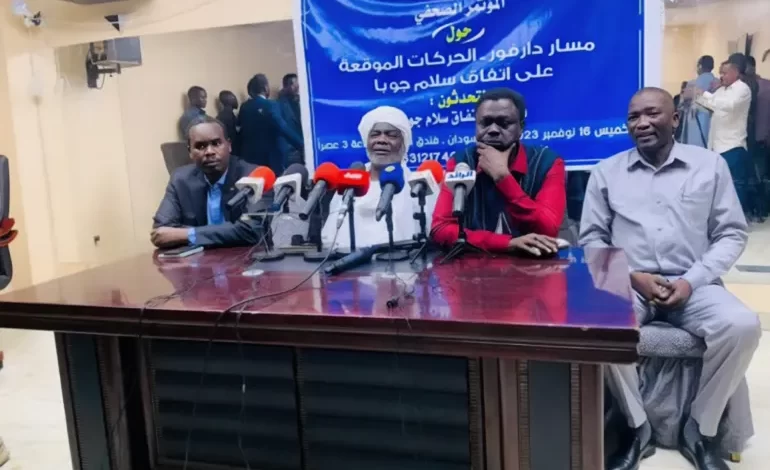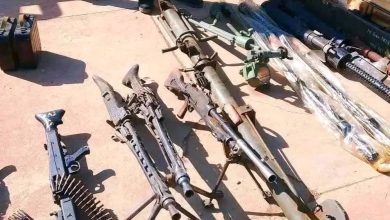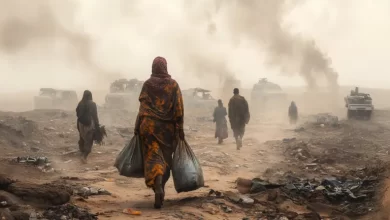What Is the Future of Armed Groups Allied with the Sudanese Army?

Sudan Events – Agencies
Concerns are growing in Sudan over the increasing number of military groups and brigades fighting alongside the regular army against the Rapid Support Forces (RSF).
Observers warn that the lack of a clear vision for the future of these groups after the war could threaten the country’s security and stability, potentially plunging it into another cycle of violence. They also caution against responding to demands from some groups for political roles as compensation for fighting with the army.
The ongoing war in Sudan since April 2023 has prompted organized military formations and popular groups to voluntarily join the fight alongside the army to repel and defeat the RSF.
Thousands of armed youths have placed themselves under the service of the army and police in various states to secure areas from which the RSF had withdrawn after being defeated in battles in Sennar, Al Jazirah, and parts of Blue Nile, White Nile, and River Nile states.
Map of Armed Groups
Several military groups joined the army in the early weeks of the war. Some included young men who had previously fought in South Sudan as part of the Popular Defense Forces under former President Omar al-Bashir, which was dissolved in 2020.
There are now twelve militia groups fighting alongside the army. Among the most prominent are the “Al-Baraa ibn Malik Brigades,” “The Pilots,” “Lightning Bolt,” “The Tourists,” and “The Solid Structure.” Leaders of these brigades have declared that they fight under the army’s banner and will surrender their weapons and return to civilian life after the war.
Elements from the youth group “Angry Without Borders,” which rose to prominence during protests against the al-Bashir regime, have also joined the army.
In October 2024, Abu Aqla Muhammad Kikil, the commander of the Sudan Shield Forces—founded in early 2022—also joined the army. He had previously defected from the RSF after leading its forces in Al Jazirah state and helped reclaim the area alongside the army in December.
In West Kordofan, bordering Darfur and South Sudan, 6,000 youths from six localities formed “reserve forces,” organizing themselves into platoons, brigades, and factions to fight alongside the army in their state.
Repositioning
At the beginning of the war, armed movements that signed the Juba Peace Agreement initially declared neutrality. However, by November 2023, they changed their stance and joined the fight with the army against the RSF. These include the Sudan Liberation Movement led by Darfur governor Minni Arko Minnawi and the Justice and Equality Movement led by Finance Minister Jibril Ibrahim.
Other groups such as the Sudan Liberation Movement under Central Darfur Governor Mustafa Tambour and the Sudanese Coalition Forces under West Darfur Governor Khamis Abakar—who was reportedly assassinated by the RSF—also sided with the army.
The Sudan Liberation Movement-Transitional Council, led by Salah Rasas, also joined the army after splitting from its leader Elhadi Idris in July 2024. Rasas was later appointed to the Sovereignty Council in Idris’s place.
Similarly, Abdullah Yahya defected from the Sudan Liberation Forces Assembly, led by Tahir Hajar, and allied his forces with the army. He too was appointed to the Sovereignty Council, replacing Hajar.
In April 2025, the new Justice and Equality Movement led by Mansour Arbab declared support for the Sudanese Armed Forces “to defeat and eliminate the treacherous rebellion,” following a meeting with Sovereignty Council President and army chief Abdel Fattah al-Burhan.
Popular Resistance
In eastern Sudan, three armed movements last week announced the formation of a joint force in the border area of Qarqar in Eritrea. These include the Beja Congress led by Musa Mohamed Ahmed, the Eastern Sudan Liberation Movement led by Ibrahim Dunya, and the National Movement for Justice and Development led by Mohamed Tahir Suleiman Betay.
The RSF’s deployment in Khartoum and central states triggered a massive mobilization of tens of thousands of citizens who received military training to reclaim their regions. Many complained of delays in being armed, sparking controversy and criticism of the military leadership, which was wary of uncontrolled weapon proliferation and misuse.
To organize the mobilized popular resistance across the states, the armed forces appointed retired General Bashir Maki El-Bahi in May 2025 as head of the National Committee for Mobilization and Popular Resistance.
Comprehensive Reform
Former Deputy Chief of Staff and army spokesperson General Mohamed Bashir Suleiman believes that failure to resolve the future of armed groups allied with the army before the war ends will threaten Sudan’s security and stability.
He told Al Jazeera Net that the ruling leadership should consult a national committee and experts to develop a vision for reforming and modernizing the armed forces that accounts for regional and demographic balance, and incorporates the views of armed group leaders who signed peace deals.
Suleiman added that the post-war vision should be comprehensive, addressing the political issues and grievances that led some groups to take up arms in the first place—within a broader effort to build a modern state.
Meanwhile, journalist and armed group affairs specialist Bakri Al-Madani believes the 2020 Juba Agreement requires the integration of armed forces into the regular security forces (army, police, and intelligence), and some groups have already begun this process—especially the Sudan People’s Liberation Movement-North led by Malik Agar.
He told Al Jazeera Net that most fighters from these movements joined the army during the war, as confirmed by Jibril Ibrahim.
Al-Madani believes that a military victory for the army would inspire a positive atmosphere that encourages full integration of these fighters into the national forces. However, achieving this will be difficult if a political settlement is reached with the RSF that allows it to re-enter the political scene.
He also predicts that forces like Sudan Shield and leaders of resistance groups will remain active after the war ends—and may even bolster their presence by seeking political influence and participating in governance.



